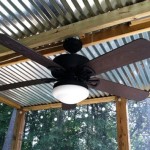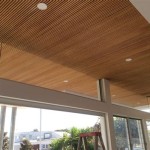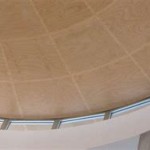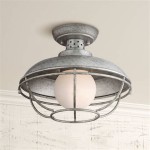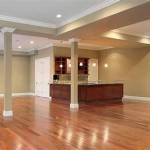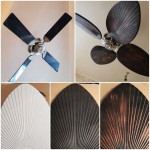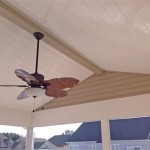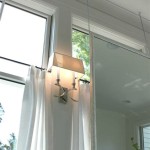Illuminating Grandeur: Selecting the Right Lighting for Vaulted Ceilings
Vaulted ceilings, characterized by their upward-sloping planes, offer a sense of spaciousness and architectural drama to any room. However, this unique architectural feature presents specific lighting challenges. Standard lighting solutions optimized for rooms with conventional ceiling heights often fail to adequately illuminate the vertical expanse and unique angles of vaulted ceilings. Effectively lighting these spaces necessitates a careful selection of fixtures and placement strategies to ensure both functionality and aesthetic appeal.
The primary challenge in lighting vaulted ceilings lies in delivering sufficient illumination to the entire room while avoiding glare and shadows. The increased height requires more powerful light sources or strategically positioned fixtures to cover the extended vertical space. Furthermore, the angled surfaces can create uneven light distribution if not properly addressed. The selection process should consider the room's dimensions, the ceiling's pitch, the intended use of the space, and the overall aesthetic desired.
Key Point 1: Types of Lighting Fixtures Suitable for Vaulted Ceilings
Several types of lighting fixtures are well-suited for illuminating vaulted ceilings. The optimal choice depends on the specific needs and preferences of the homeowner. These fixtures can generally be categorized as ambient, task, and accent lighting, each serving a distinct purpose in creating a well-balanced lighting scheme.
Recessed Lighting: Recessed lights, also known as can lights, are a popular choice for vaulted ceilings due to their discreet design and ability to provide widespread ambient lighting. They are installed directly into the ceiling, minimizing visual clutter and offering a clean, modern look. When selecting recessed lights for vaulted ceilings, it is crucial to choose fixtures with adjustable gimbals. These adjustable fixtures allow for directing the light beam downwards, ensuring that the light reaches the floor rather than being lost against the angled ceiling. The number of recessed lights required will depend on the size of the room and the desired level of illumination. A general guideline is to space recessed lights approximately 4-6 feet apart, adjusting the spacing based on the specific light output of the chosen fixtures. Furthermore, consider using dimmer switches to control the intensity of the recessed lights, allowing for adjustments based on different activities and moods.
Track Lighting: Track lighting offers a flexible and customizable lighting solution for vaulted ceilings. Track systems consist of a linear track mounted to the ceiling, with individual light heads that can be positioned and aimed independently. This allows for directing light to specific areas of the room, highlighting architectural features, or providing task lighting for specific activities. Track lighting is particularly well-suited for rooms with sloped ceilings, as the adjustable heads can be angled to compensate for the ceiling's pitch. When selecting track lighting, consider the length of the track, the number of light heads, and the type of bulbs used. LED bulbs are a popular choice due to their energy efficiency and long lifespan. Moreover, the style of track lighting should complement the overall aesthetic of the room. Modern track lighting systems often feature sleek, minimalist designs, while more traditional options may incorporate decorative elements.
Pendant Lights: Pendant lights are suspended from the ceiling by a chain, rod, or wire, and can add a decorative touch to a room with vaulted ceilings. They are often used to provide ambient or accent lighting, and can be hung individually or in clusters to create a focal point. When selecting pendant lights for vaulted ceilings, it is important to consider the length of the suspension. The pendants should be hung at a height that is proportional to the ceiling height and the size of the room. For high vaulted ceilings, longer suspensions will be necessary to bring the light down to a comfortable level. Additionally, consider the style of the pendant lights. Options range from simple, modern designs to elaborate, ornate fixtures. The style should complement the overall aesthetic of the room and the other lighting fixtures.
Chandeliers: Chandeliers are decorative lighting fixtures that typically feature multiple arms or tiers, adorned with bulbs or shades. They can add a touch of elegance and grandeur to a room with vaulted ceilings. Chandeliers are often used as a focal point in dining rooms or living rooms, providing both ambient and decorative lighting. When selecting a chandelier for a vaulted ceiling, it is crucial to consider the size and weight of the fixture. The chandelier should be proportional to the size of the room and the height of the ceiling. A large, heavy chandelier may require additional support to ensure that it is securely mounted. Additionally, consider the style of the chandelier. Options range from traditional crystal chandeliers to modern, minimalist designs. The style should complement the overall aesthetic of the room and the other lighting fixtures. Proper installation by a qualified electrician is essential to ensure the chandelier is safely and securely mounted.
Key Point 2: Placement Strategies for Optimal Illumination
Effective lighting design for vaulted ceilings relies not only on the selection of appropriate fixtures but also on their strategic placement. Proper placement ensures even light distribution, minimizes glare, and maximizes the functionality of the lighting system.
Layering Light: Layering light involves combining different types of lighting to create a well-balanced and visually appealing lighting scheme. This approach is particularly effective for vaulted ceilings, as it allows for addressing different lighting needs and creating depth and dimension in the room. Ambient lighting, such as recessed lights or track lighting, provides overall illumination. Task lighting, such as pendant lights or table lamps, provides focused light for specific activities. Accent lighting, such as spotlights or wall sconces, highlights architectural features or artwork. By combining these different types of lighting, it is possible to create a lighting scheme that is both functional and aesthetically pleasing.
Addressing Dark Corners: Vaulted ceilings can often create dark corners and shadows, particularly in areas where the ceiling slopes downwards. To address these dark areas, consider using wall sconces or strategically placed floor lamps. Wall sconces can be mounted on the walls to provide upward-directed light, which can help to brighten the upper portion of the room and reduce shadows. Floor lamps can be placed in corners to provide localized light and fill in dark areas. The placement of these fixtures should be carefully considered to ensure that they effectively address the dark corners without creating glare or uneven light distribution.
Highlighting Architectural Features: Vaulted ceilings often feature unique architectural details, such as beams, arches, or exposed rafters. Accent lighting can be used to highlight these features and add visual interest to the room. Spotlights or track lighting can be directed towards these features to create a dramatic effect. Alternatively, rope lighting can be installed along the beams or rafters to provide a subtle, ambient glow. The placement of accent lighting should be carefully considered to ensure that it effectively highlights the architectural features without creating glare or distracting from the overall aesthetic of the room.
Considering Ceiling Height: The height of the vaulted ceiling is a crucial factor to consider when determining the placement of lighting fixtures. For very high ceilings, it may be necessary to use longer suspension lengths for pendant lights or chandeliers to bring the light down to a comfortable level. Recessed lights should be spaced further apart to provide adequate coverage. Additionally, consider using dimmer switches to control the intensity of the lights, allowing for adjustments based on different activities and moods. For lower vaulted ceilings, it may be necessary to use smaller fixtures and shorter suspension lengths to avoid overwhelming the space. Careful consideration of ceiling height is essential for creating a lighting scheme that is both functional and aesthetically pleasing.
Key Point 3: Considerations for Energy Efficiency and Bulb Selection
Selecting energy-efficient lighting options is crucial for reducing energy consumption and lowering electricity bills. Bulb selection plays a significant role in achieving energy efficiency and can also impact the overall ambiance and color temperature of the light.
LED Lighting: Light-emitting diode (LED) lighting has emerged as the preferred choice for energy-efficient lighting. LED bulbs consume significantly less energy than traditional incandescent or halogen bulbs, while providing comparable light output. They also have a much longer lifespan, reducing the need for frequent replacements. LEDs are available in a wide range of color temperatures, allowing for selecting the desired ambiance, from warm and inviting to cool and bright. When selecting LED bulbs for vaulted ceilings, choose bulbs with a high lumen output to ensure adequate illumination. Also, consider the beam angle of the bulb to ensure that the light is directed appropriately.
Dimmable Lighting: Using dimmable lighting fixtures and bulbs allows for controlling the intensity of the light, reducing energy consumption and creating different moods. Dimmers are particularly useful for vaulted ceilings, as they allow for adjusting the light level based on the specific activity or time of day. When selecting dimmable bulbs, ensure that they are compatible with the dimmer switch being used. Some LED bulbs may require specific types of dimmer switches to function properly. Dimmers can be installed on recessed lights, track lighting, pendant lights, and chandeliers, providing flexibility in controlling the lighting in the room.
Color Temperature: Color temperature refers to the warmth or coolness of the light emitted by a bulb, measured in Kelvin (K). Lower color temperatures (2700K-3000K) produce a warm, yellowish light that is often preferred for living rooms and bedrooms, creating a cozy and inviting atmosphere. Higher color temperatures (4000K-5000K) produce a cool, bluish-white light that is often preferred for kitchens and bathrooms, providing a brighter and more energetic ambiance. When selecting bulbs for vaulted ceilings, consider the overall aesthetic of the room and the intended use of the space. A combination of different color temperatures can be used to create a layered lighting scheme that is both functional and visually appealing.
Smart Lighting Systems: Smart lighting systems offer advanced control and customization options for lighting in vaulted ceilings. These systems allow for controlling the lights remotely via a smartphone or tablet, scheduling lighting changes, and integrating with other smart home devices. Some smart lighting systems also offer features such as color changing, scene setting, and voice control. These systems can be particularly useful for vaulted ceilings, as they allow for easily adjusting the lighting to suit different activities and moods. However, smart lighting systems typically require a more complex installation and may be more expensive than traditional lighting solutions.

Lighting Ideas For Vaulted Ceiling Soho Blog

10 Of The Best Vaulted Ceiling Lighting Ideas Lightopia

What S The Best Lighting For Vaulted Ceilings Amanda Katherine

Can You Put Recessed Lights Into A Vaulted Ceiling Alternatives

Light A Sloping Ceiling Lighting From Diffe Angle The Company

19 Vaulted Ceiling Lighting Ideas For Every Style

What S The Best Lighting For Vaulted Ceilings Amanda Katherine

19 Vaulted Ceiling Lighting Ideas For Every Style

Vaulted Ceiling Lighting Ideas Creative Solutions

I Like The Vaulted Ceiling Lighting Windows Are Wonderful But Would Be Tough To Cover Lights Living Room Great Rooms
Related Posts

